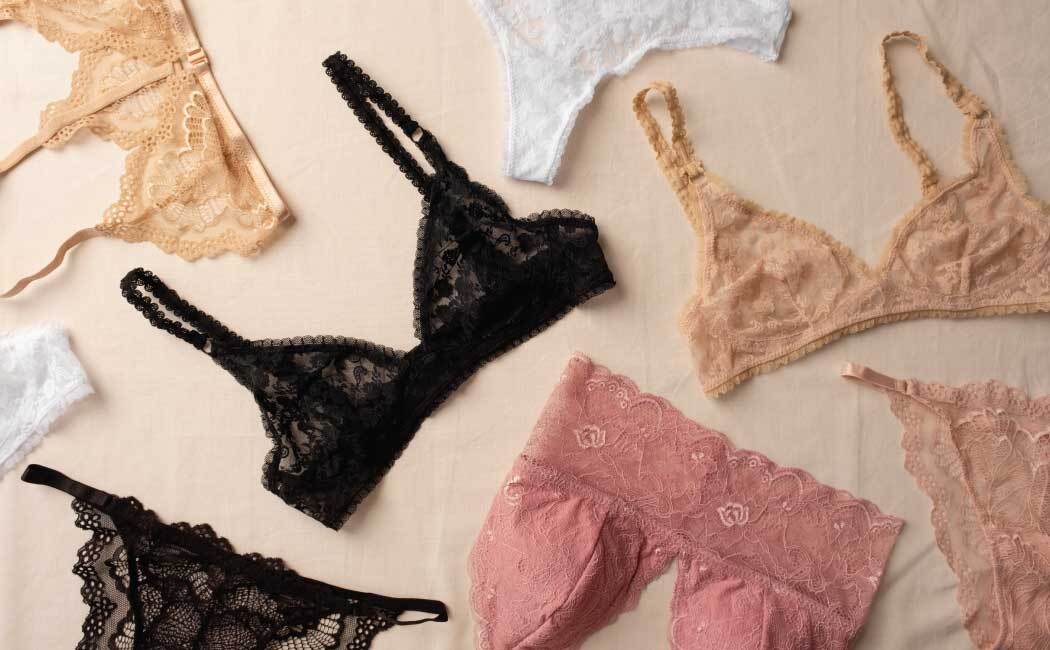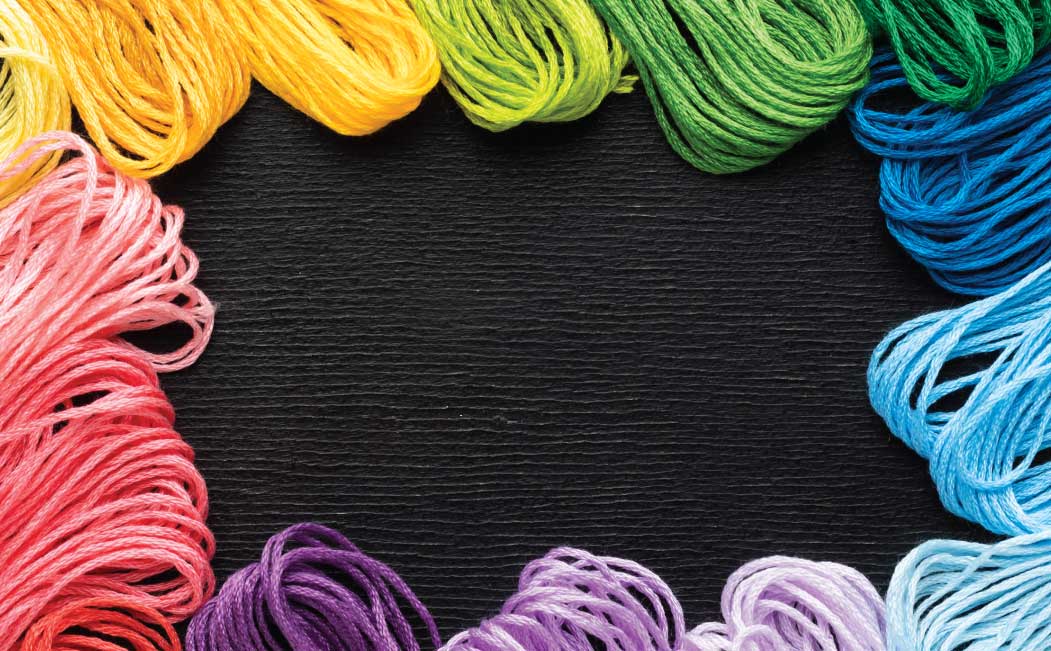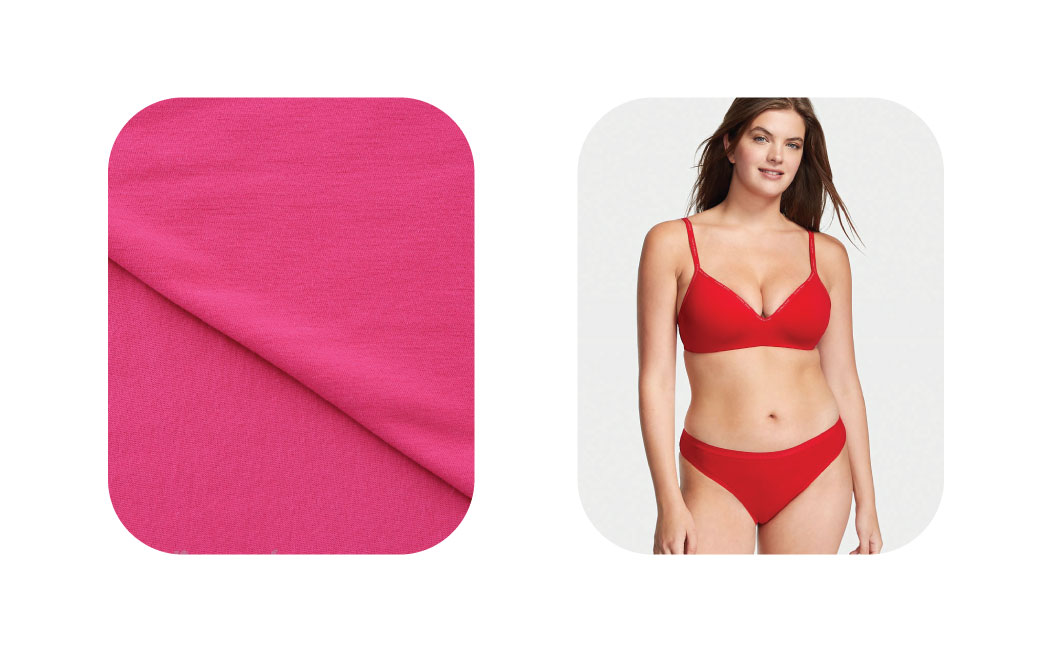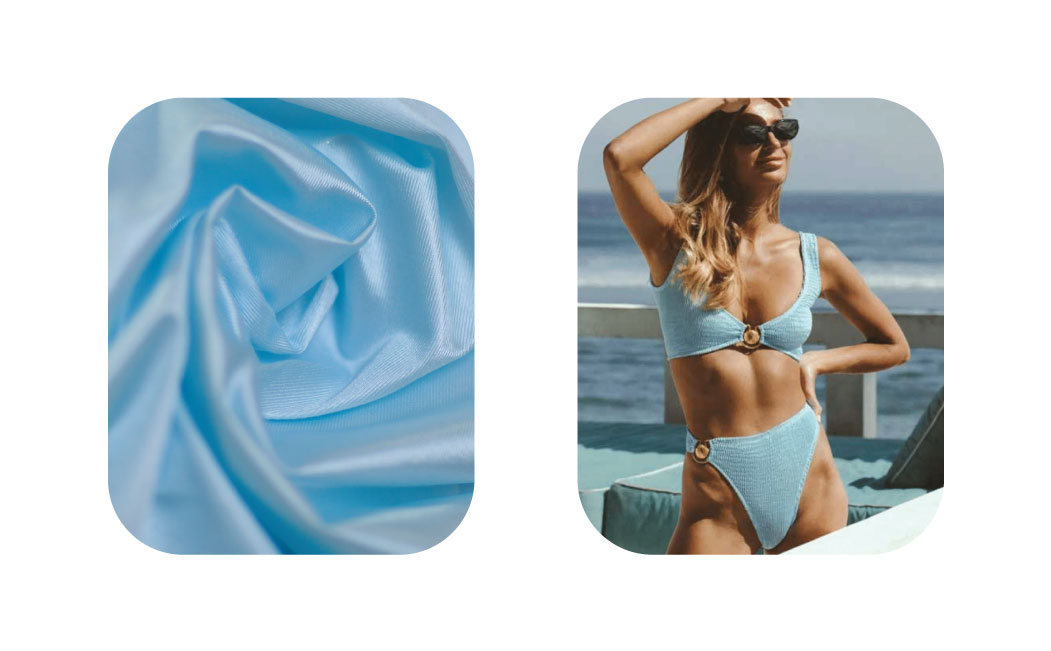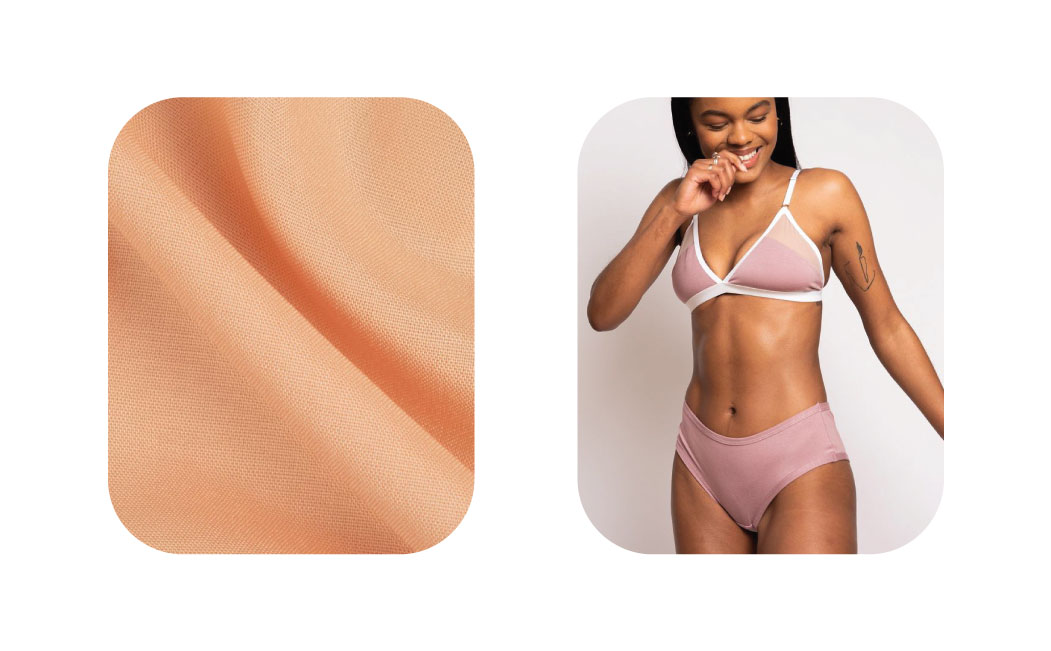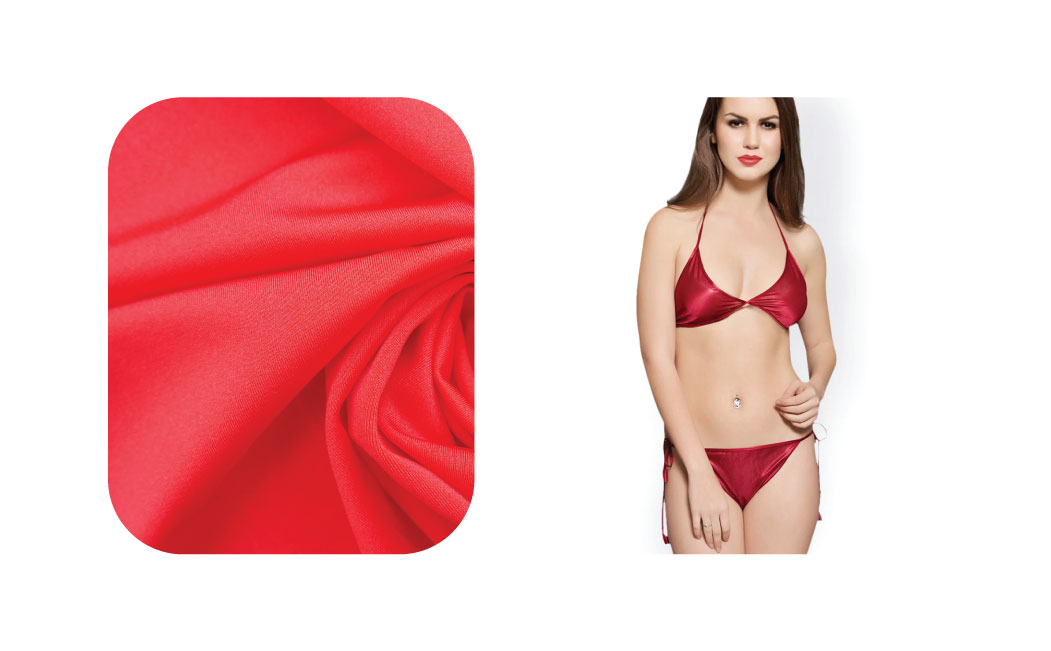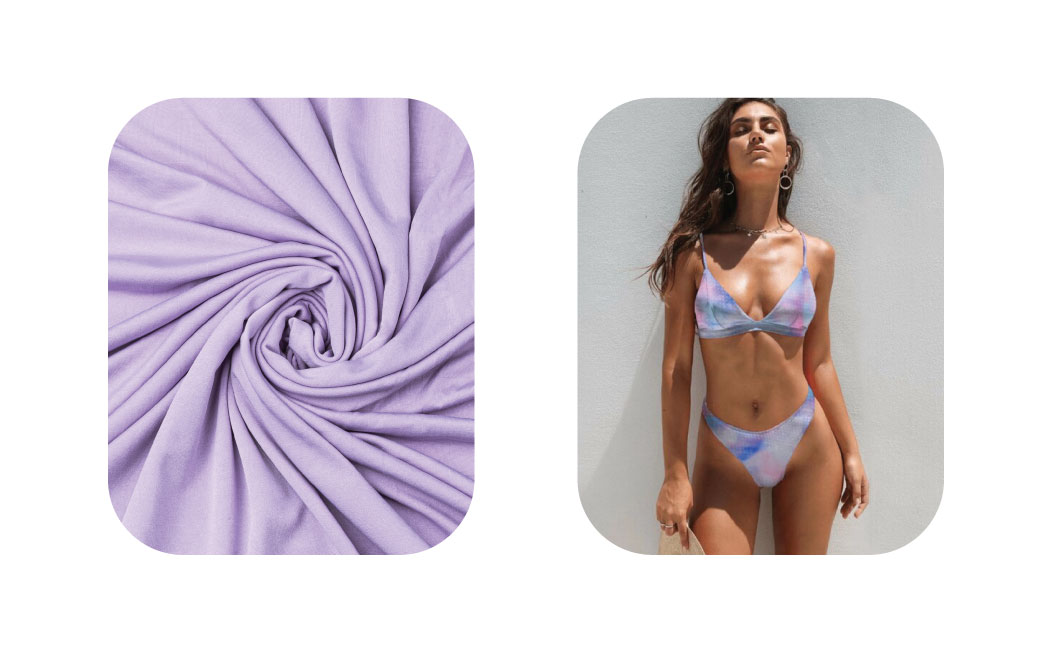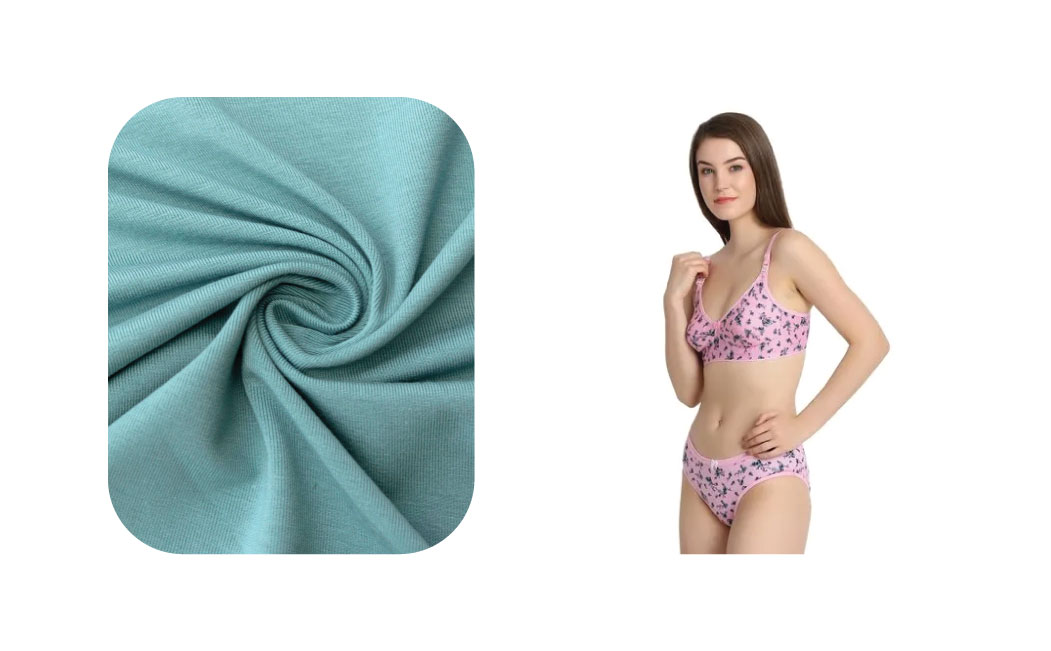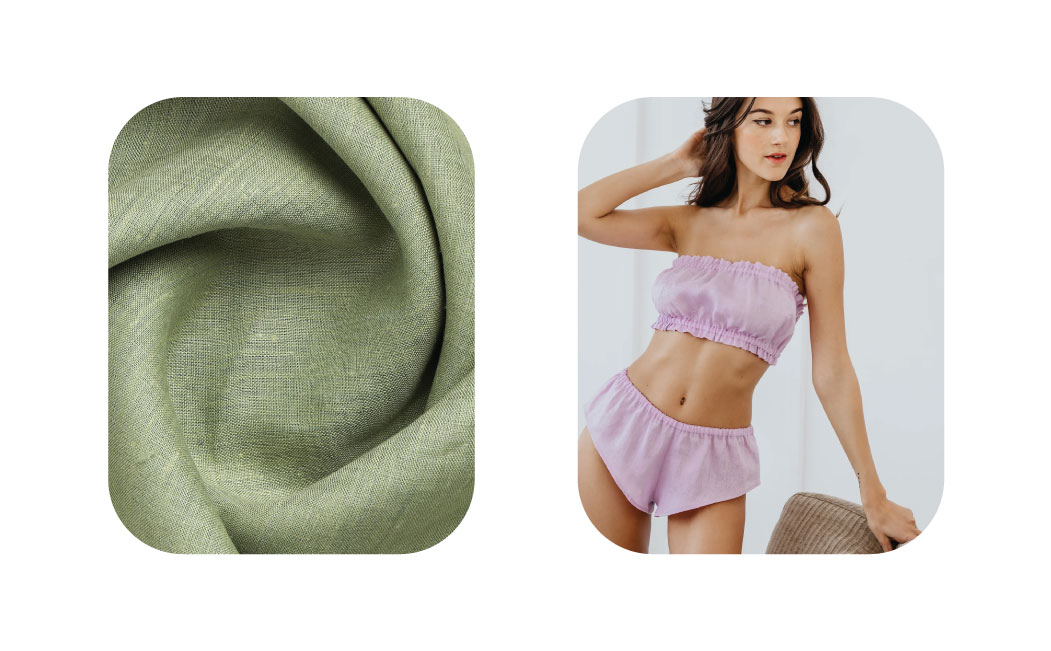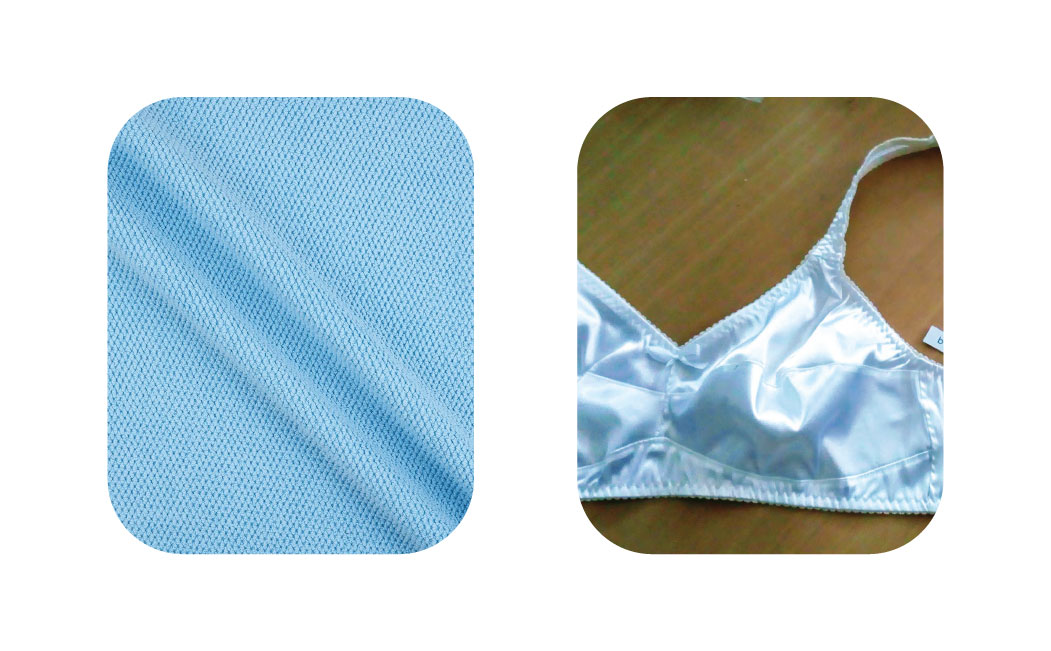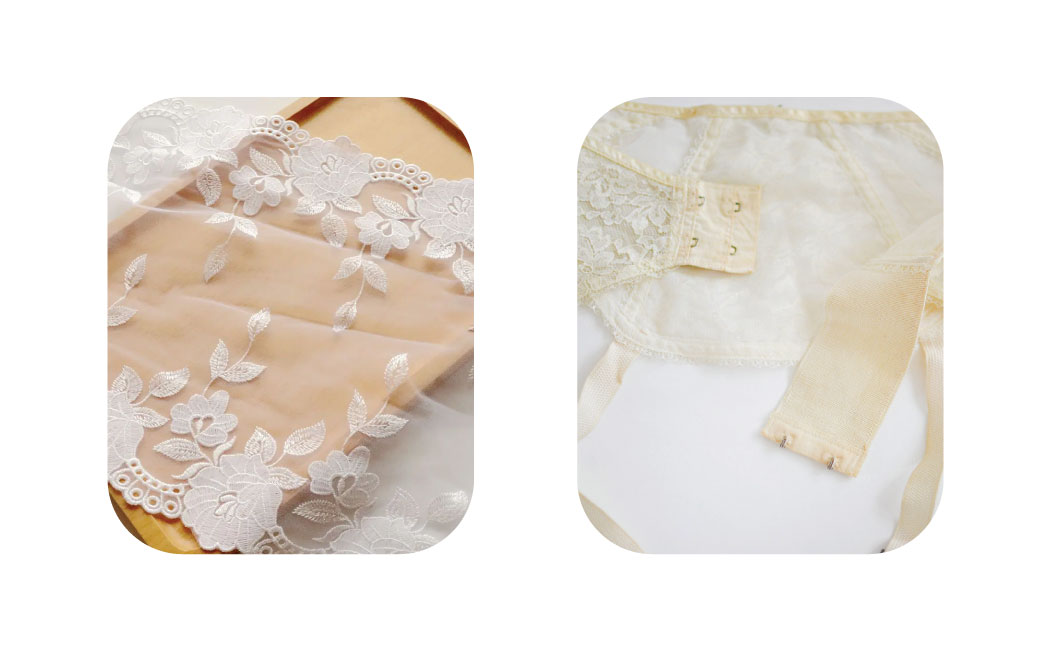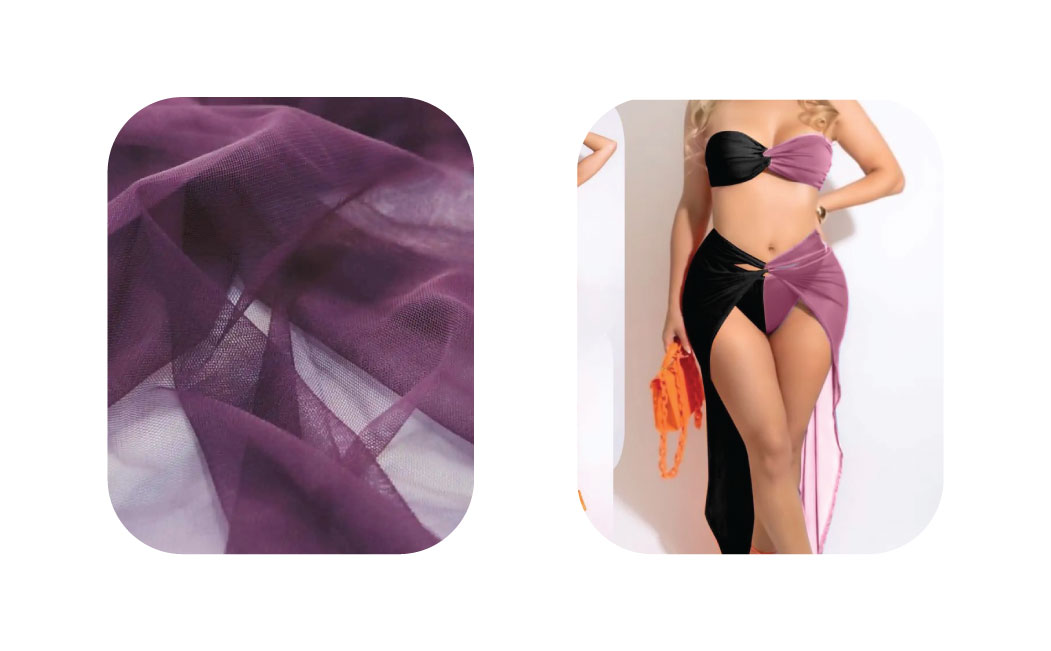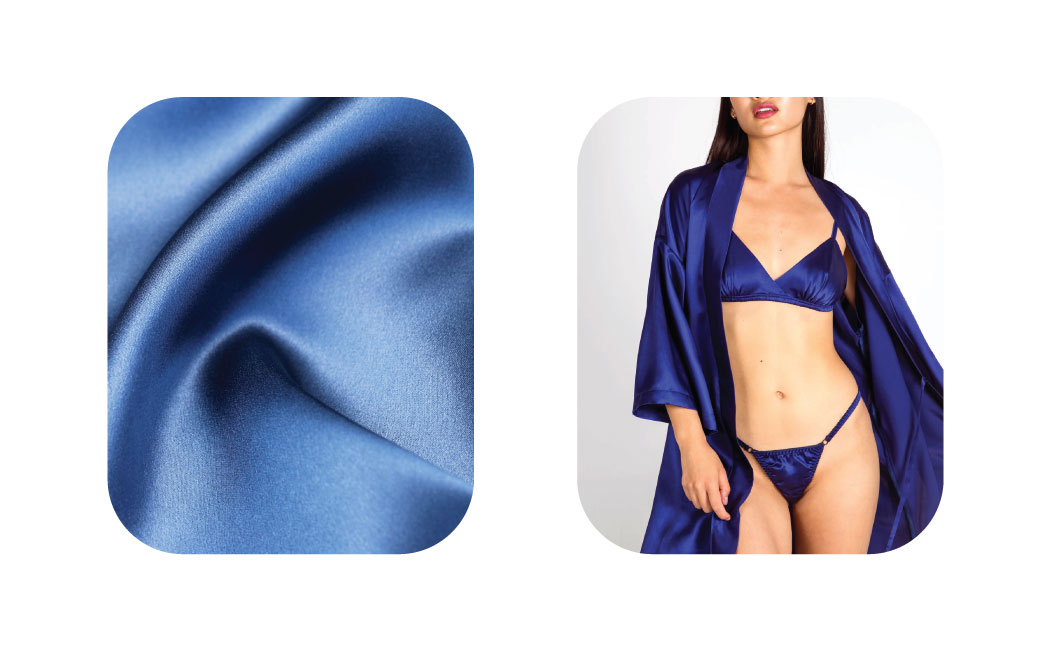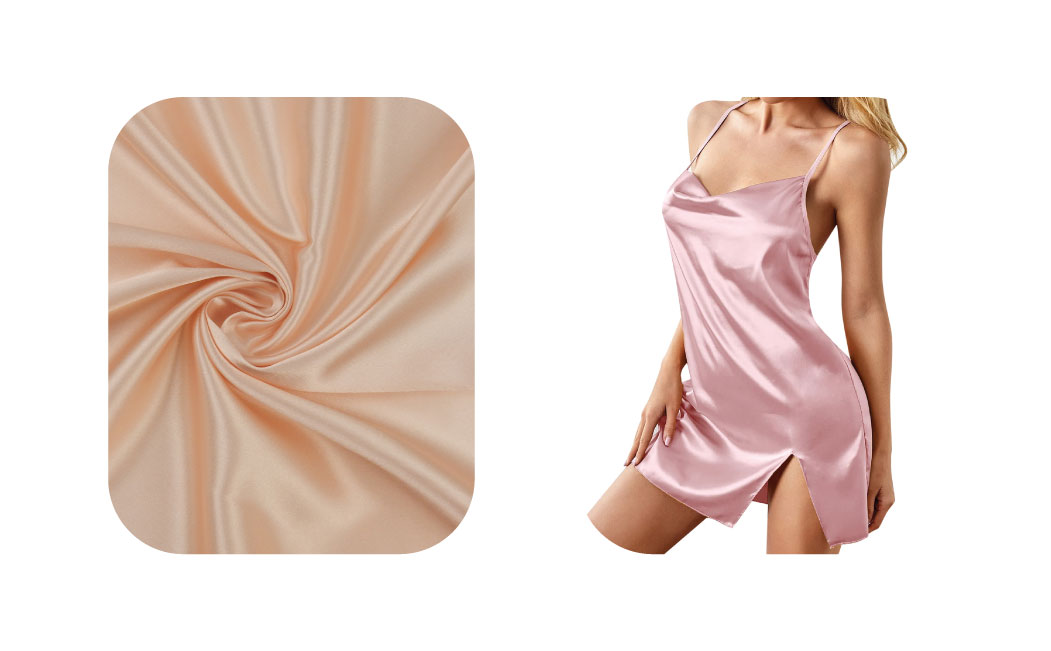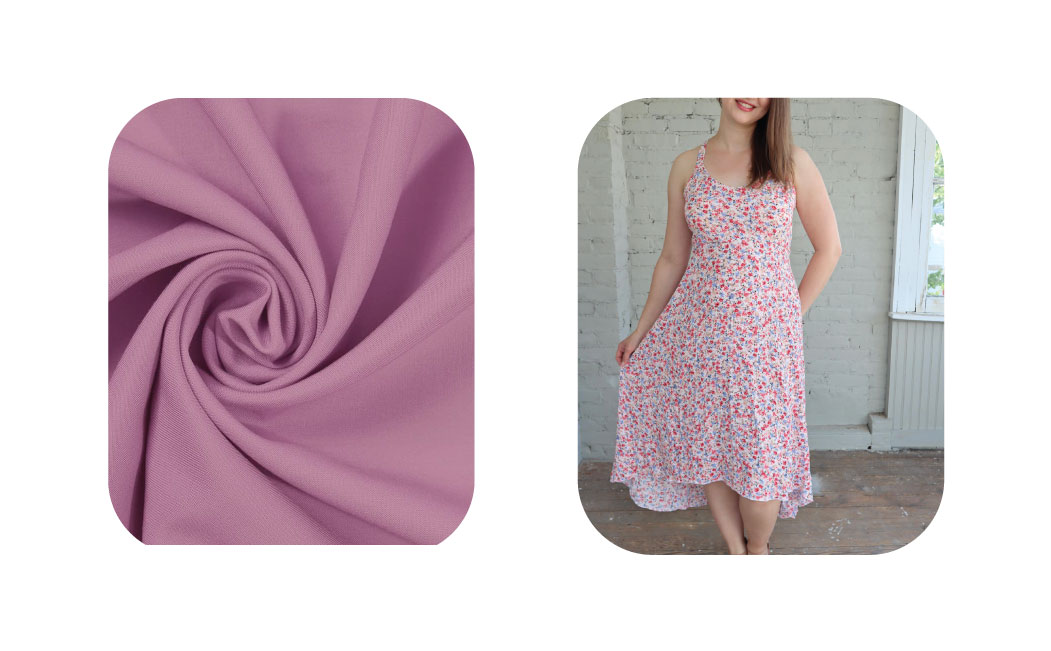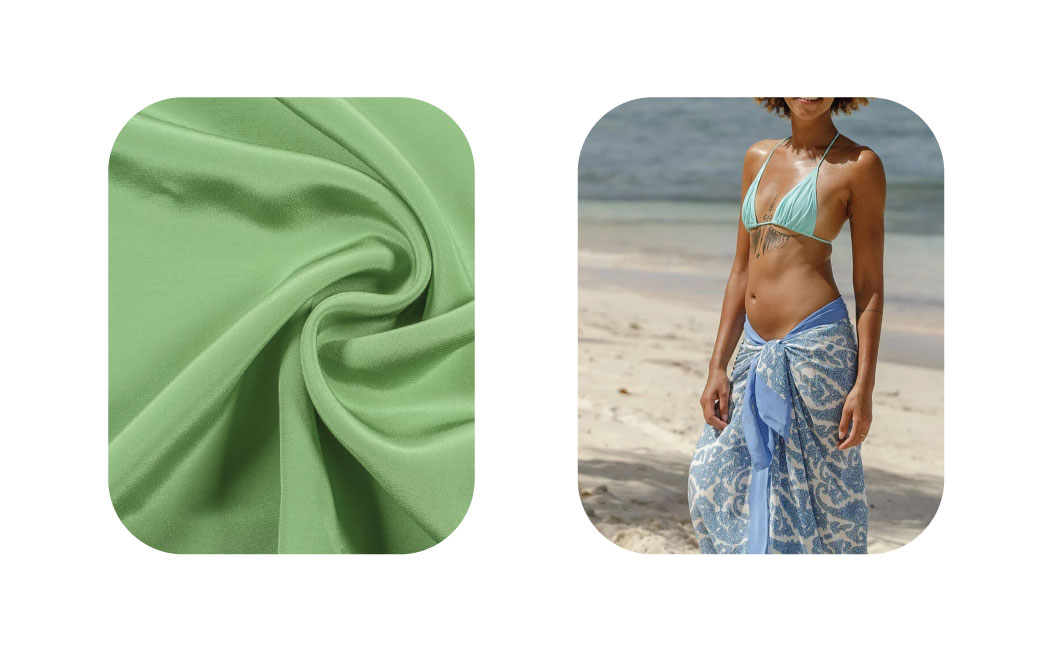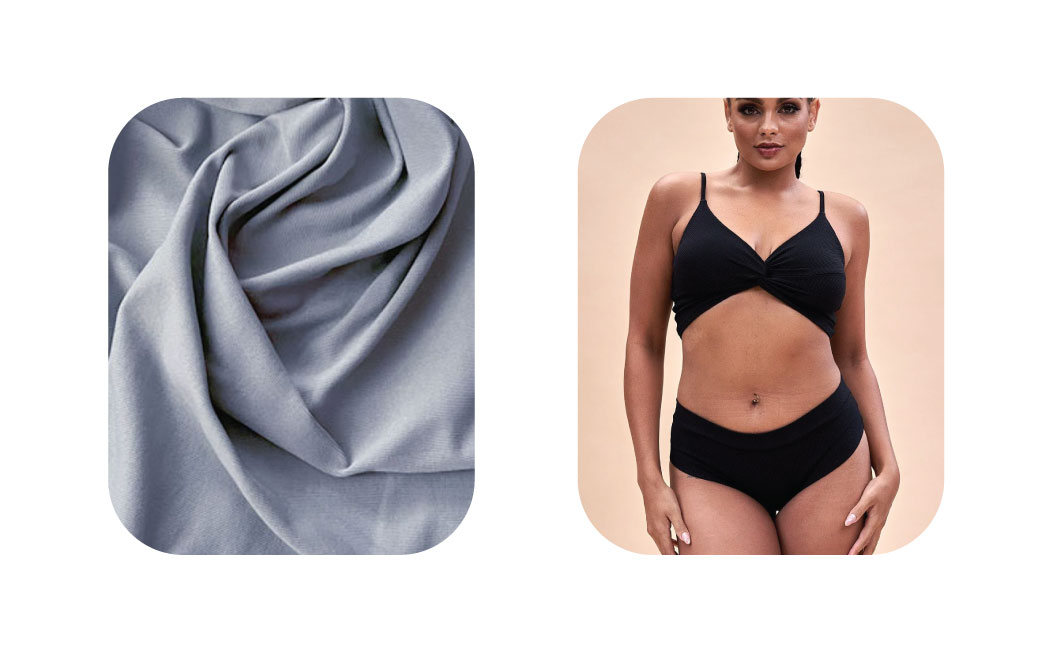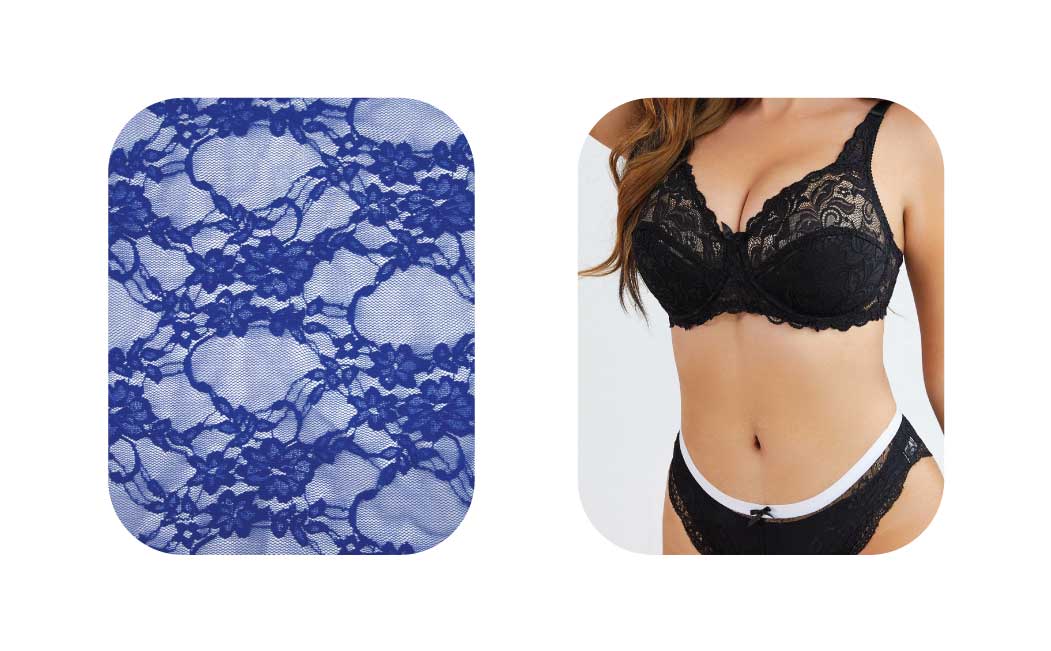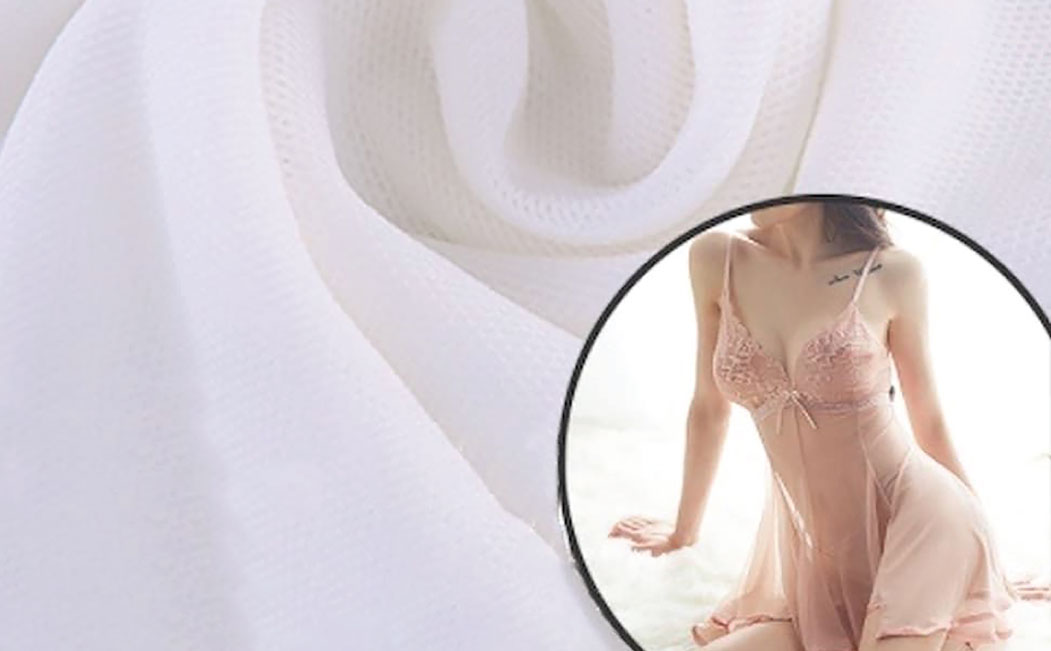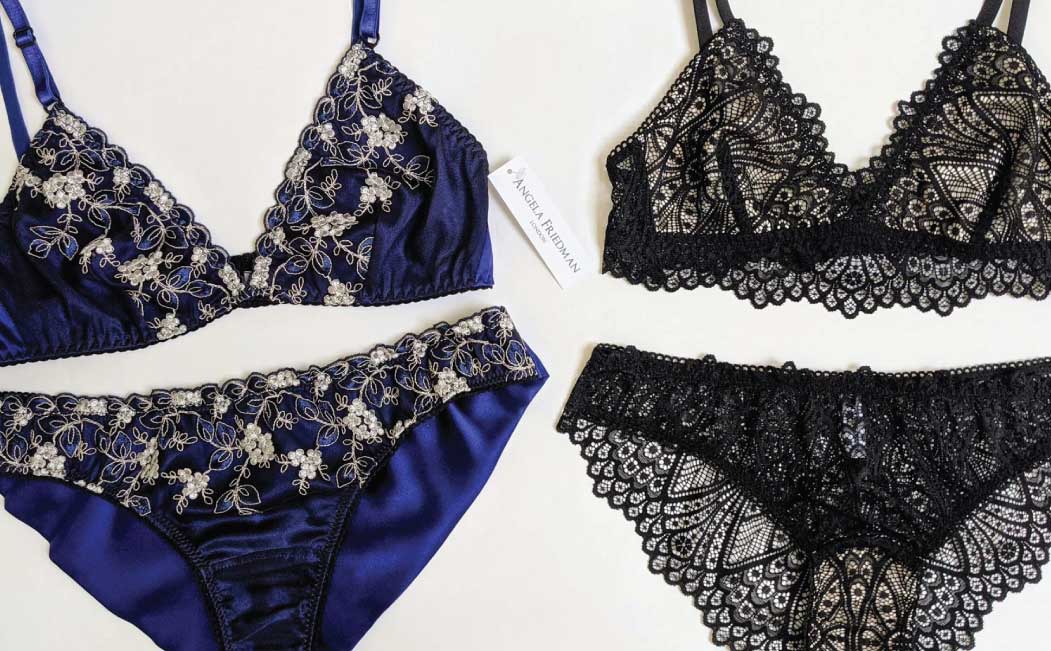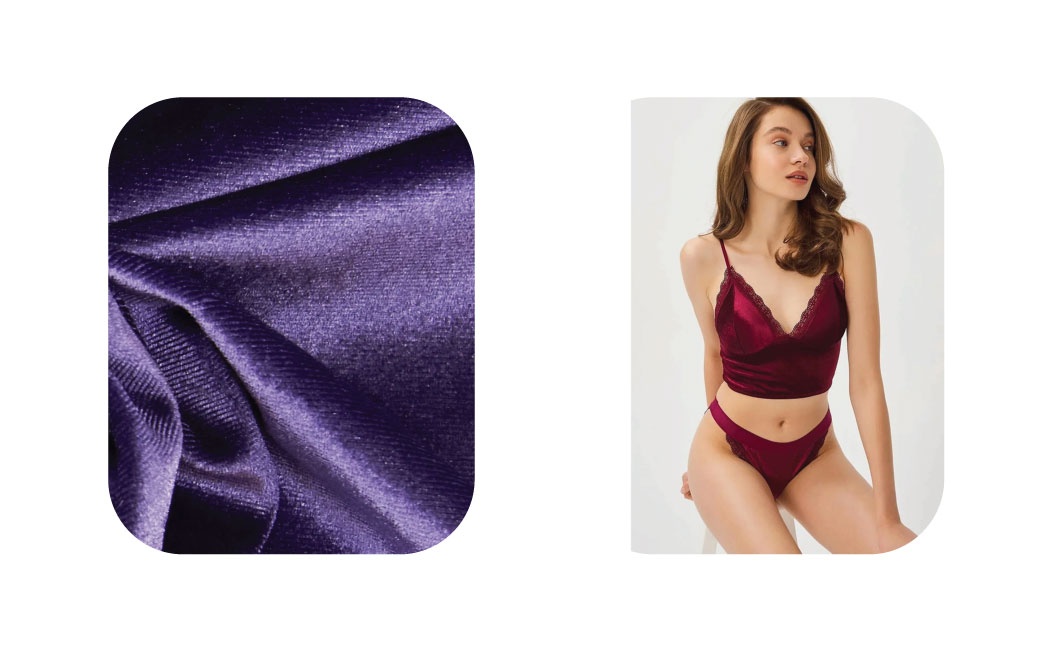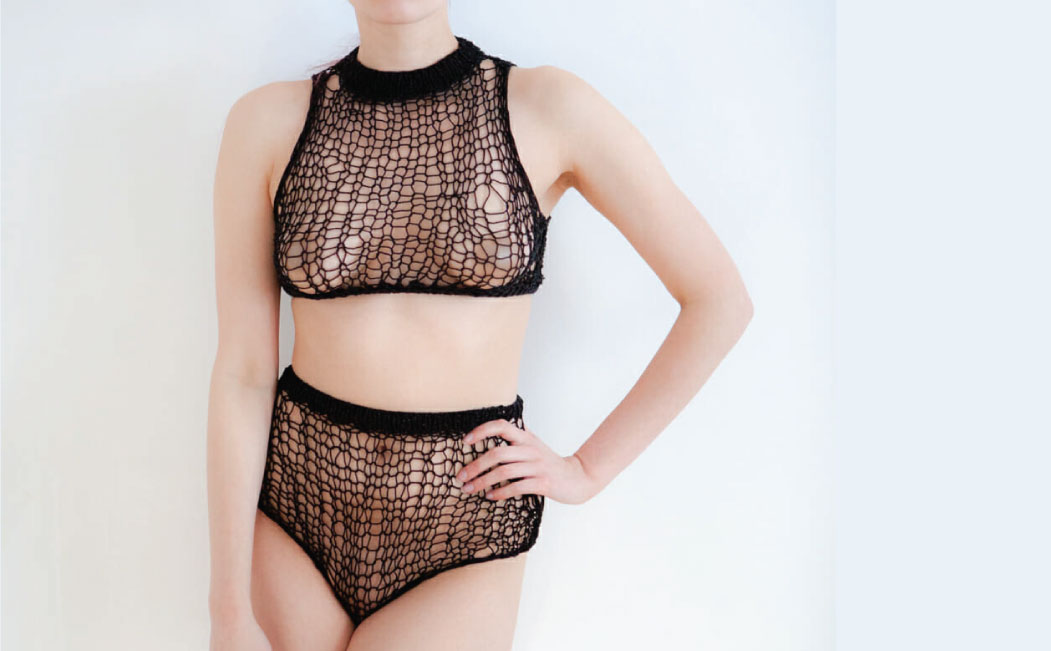Understanding lingerie is very important in order to explore the types of lingerie fabric. The word “lingerie” is borrowed from French, which means clothing products that are intimate and alluring. Lingerie items are particularly designed for women, comprising sleeping wear, undergarments, robes, etc.
They are created with lightweight materials to offer sleek texture, feel, comfort, and appearance. In order to achieve the maximum level of comfort, numerous materials like silk, cotton, organza, lace, and many more are used in the production of high-quality lingerie and underwear products.
Historical Evolution of Lingerie Fabric: From Organic to Synthetic
Decades ago, the lingerie fabric used to manufacture delicate underwear, panties, and intimate wear included only organic materials extracted from natural substances. This means that linen, silk, and cotton were the only types of lingerie fabrics used to make comfortable, luxurious, and body-friendly lingerie.
World War II brought a revolution to the concept of lingerie manufacturing using organic materials. Since buying silk from Asia during that time was not possible, DuPont presented nylon as a replacement, which turned out to be highly popular among the women.
They admired the benefits like good flexibility, stain resistance, durability, and, of course, an amazing comfort level. It is considered the beginning of a new fabric era that encompassed synthetically induced lingerie material types.
Common Lingerie Fabric Types
There are so many choices for you to decide which material is perfect for creating lingerie products. The fabric types mentioned below are categorically organized so that you can pinpoint the most suitable one for you.
Threads of Fibers
The most important thing in making a fabric reliable is the fiber or thread. The interesting fact about the threads is that they are derived from both synthetic and organic sources.
To clarify, organic materials are those that are extracted from animals and plants, and synthetic fibers are artificially created manmade fibers. Let’s give you the most common types of fabrics.
Cotton
Cotton is a 100% organic material derived from plants. It is known for its comfort, breathability, and moisture-absorbing features. Cotton is among the perfect fabrics to create comfortable and stylish lingerie due to its soft texture, hypoallergenic properties, and versatility. Cotton panties are the best summerwear to feel free and at ease all the time.
Prominent Benefits of Cotton
- Absorbancy Factory: Cotton has the marvalour ability to keep perspiration away from the body due to being an absorbent fabric. This property keeps the body dry and fresh and, hence, is the perfect material to create lingerie for daily wear.
- Hypoallergenic Nature: Cotton prevents the body from getting allergies and skin rashes due to being a hypoallergenic material. This feature makes it the best option for those with sensitive skin.
- Eco-Friendly: Cotton is biodegradable, which means it is highly eco-friendly as it biogrades quickly since it is made up of cellulose (plant cell walls and vegetable fiber compound). So, it is considered the most beneficial material to the environment. This accounts for cotton being an excellent choice to make lingerie since harming the environment isn’t an option.
Nylon
Nylon represents a category of synthetic polymers made from polyamide, where repeating units are connected by amide links. This silk-like thermoplastic, commonly derived from petroleum, has the versatility to be melt-processed into fibers, films, or various shapes. Nylon polymers can be blended with diverse additives to achieve a wide range of property variations.
Nylon has a silk-like texture that is very soft and smooth, which boosts the essence of a lingerie outfit that includes a robe, bra, and pants. The properties of nylon as an ingredient in lingerie include wrinkle-free texture, the ability to maintain its shape, and quick drying. These properties make nylon a remarkable lingerie material that is classy and epic in appearance for a body.
Benefits of Nylon
- Blends into Sheerness: One of the best qualities and benefits of nylon is that sheer and woven nylon can add transparency to the lingerie, which becomes sensual and very alluring.
- Color Retention: If you want vibrant colors that stay for a longer period of time, nylon is the best material to create lingerie for you. The reason is this fabric’s color retention property, which allows hues and dyes to stay for a reasonable amount of time. You can review the work of a reliable lingerie manufacturer that customizes the outfits in terms of proper colors and design to get a proper idea of what color retention is.
- Easy Cleaning and Care: Cleaning nylon is very easy as it dry very quickly. Not much care is required for nylon lingerie clothing.
Rayon
Rayon is a type of fabric extracted from the purified cellulose of wood pulp. Then the wood pulp is transformed into a soluble compound, which is then turned into a solid chemically in order to make it a synthetic fiber. This is the reason rayon is termed a semi-synthetic fiber. As for women’s underwear, bras, panties, and exotic robes, this fabric embodies luxury, style, smoothness, and sensualness. The reason is its silk-like texture and feel.
Promising benefits of Rayon
- Aesthetic Appeal: Rayon is perfect at draping, due to which it allows lingerie to accurately and gracefully follow the curves of the body. It simply intensifies the aesthetic appearance of lingerie.
- Absorbent: Rayon fabric has absorbent properties that quickly absorb moisture. This makes the fabric breathable and a perfect summer choice.
- Cost-effective: Rayon fabric is more affordable than other materials resembling silk. So, if you are willing to get rayon made lingerie, you will get elegance, comfort, and style at a reasonable cost.
Silk
Interestingly, silk comes from insects, which makes it a natural and 100% organic material. Silk is considered one of the most luxurious but expensive materials for making clothes. Silk lingeries are delicate, very comfortable, alluring, durable, and in high demand.
If you consider yourself one of the lingerie brands, silk fabric can offer you great benefits in terms of popularity and revenue. Underwear, fancy silk panties, brassiers, and other lingerie items made with silk are perfect for luxurious niches. You can hire an underwear manufacturer to create elegant silk underwear and other undergarments for your brand’s requirements.
Benefits of Silk
- Supreme Elegance: Silk has extreme elegance and sophistication. Lingerie made from silk often boasts a luxurious sheen and a visually appealing drape, adding a touch of glamour to intimate apparel.
- Environment-Friendly: Silk is an organic and biodegradable fabric, which makes it an environmentally friendly choice compared to other synthetic fibers.
- Hypoallergenic: Silk is less likely to cause skin allergies due to being hypoallergenic. As lingerie is very intimate and the perfect attire to stay comfortable, silk is the preferred choice for nightgowns, sleepwear clothes, sensual dressing, and other appealing lingerie.
- Temperature Regulation: Silk has a unique quality of temperature regulation, which means the fabric offers warmth in cooler weather conditions and keeps the body cool in hot weather.
Spandex
Spandex is also known as lycra or elastane. It is composed of a polyether-polyurea copolymer, which is a great fiber to offer flexibility. This is why spandex is flexible and also very popular, as its stretch capacity is 5 to 8 times. This material is commonly used in the manufacturing of stretch pants, athletic wear, yoga pants, slimfit jeans, socks, motion capture suits, and lingerie items including underwear and bras.
An interesting fact about spandex is that it is always woven into other organic, semi-synthetic, and synthetic materials since pure spandex cannot be used in any apparel products.
Benefits of Spandex
- Compatibility with Other Fibers: spandex is often blended with other fabrics like polyester, nylon, or cotton to incorporate the elements of flexibility, feel, comfort, and aesthetics. The combination and blends additionally boost the sensitive nature of this intimate clothing. This includes factors such as hypoallergenic properties, breathability, and ease of cleaning and care, which are significant considerations in lingerie clothes.
- Style Variations: Spandex has a huge element of versatility that allows lingerie manufacturers or designers to be artistic with a wide range of styles. For instance, you can have form-fitting bodysuits and delicate lace bralettes made with spandex to ensure a diverse selection for different occasions and individual preferences.
- Shape Retention: Polyurethane is the main component in elastane or spandex, which is synthetic raw fiber stretchy as rubber. Due to this component, elastane can be stretched by up to 700% without being damaged. It returns to its original shape, unaffected. Therefore, lingerie created from spandex has the very fine quality of retaining its shape.
Bamboo
Bamboo fabric comes from the bamboo plant. It is very durable and considerably ideal for making women’s underwear. In recent years, bamboo has become very popular due to its softness, antibacterial properties, and admirable absorbency.
Many bamboo materials exhibit remarkable flexibility. However, it is advisable to assess the fabric’s retention after stretching because certain bamboo fabrics may experience gradual stretching over time. This makes bamboo especially suitable for lingerie apparel.
Benefits of Bamboo
- Eco-Friendly and Sustainable: Bamboo fabric for lingerie is a valid consideration for sustainable fashion options. The reason is that bamboo is a fast-growing plant that only needs minimal water, pesticides, and fertilizers, contributing to a more environmentally conscious industry.
- Antibacterial Traits: Bamboo material is naturally antibacterial, inhibiting the growth of odor-causing bacteria. In terms of lingerie, the clothes made from bamboo remain fresher for longer periods between washes. The antibacterial property also adds to the hygienic properties of this fabric.
- Moisture-Wicking: Bamboo material is naturally moisture-wicking. This means that bamboo has a natural ability to absorb moisture or evaporate it away from the skin. The property is just perfect for making lingerie items, as it keeps the body dry.
Linen
Linen is a sturdy natural fiber extracted from the flax plant. The most exquisite linen comes from Belgium, Europe, where the climate is ideal and the soil is fertile to create perfect flax. Belgian linen ensures a very rich quality of fibers for your bedding materials and lingerie products, including panties, gowns, and bras.
Benefits of Linen
- Durability: Linen is a durable and tough fabric. This results in durable lingerie products made from linen. The linen lingerie keeps its form and texture through regular wear and washing.
- Softening Over Time: Linen makes lingerie soften with each wash and wear. This trait could make the lingerie items comfortable and enhance their texture.
- Temperature Regulation: Linen is popular for adapting to different temperatures. It keeps the body cool in warm weather conditions and provides insulation in cold weather. That is why linen lingerie is suitable for various climates.
Woven Fabrics
Most people wonder what woven fabrics are. Woven material is a piece of cloth made by crossing two sets of threads. The machines used to weave these threads to create the fabric are called looms.
Organza
Traditionally, silk is used in making organza fabric. Other than that, the cotton-made organza is known as organdy, which is very similar to organza in terms of characteristics and properties.
The interesting fact about this fabric is that it has a diverse range of types that are used in making different kinds of clothes. For example, wedding gowns and dresses.
Organza is a transparent or see-through material with a crisp texture that is very popular in the lingerie manufacturing business. The style, texture, and design make the lingerie sensual and classy. Blouses, gowns, and underwear are lingerie products made from organza. Commonly, silk organza, which is a lightweight and sheer fabric, is used in lingerie manufacturing to give the products a sleek, sensual, and eye-catching look.
Benefits of Organza
- Luxurious look: Organza gives lingerie a luxurious feel and an ideal appearance. This makes it perfectly appropriate for various occasions, but mostly to stay cozy at night.
- Breathability: The breathability factor comes naturally, as the fabric is lightweight, see-through, and made with different kinds of ventilated fabrics.
- Versatility: Organza’s versatility refers to easily incorporating this fabric into different lingerie designs. For example, chemises, bralettes, negligees, and several other intimate clothing products.
Chiffon
Chiffon fabric is translucent and delicate, which is why many people prefer chiffon lingerie. Another interesting thing about this material is that it is known as a feminine fabric. Its elegance makes it a perfect choice for intimate wear.
Benefits of Chiffon
- Temperature Regulation: Since chiffon is highly breathable, the temperature regulation property comes automatically. The passing of air is very frequent to keep the body cool during intimate activities.
- Easy Cleaning: Chiffon is very easy to clean. It gets cleaned through quick and easy washing. Also, it is very convenient to dry chiffon. This accounts for a practical approach in terms of manufacturing lingerie.
- Sensualness and Elegance: The delicacy of chiffon makes it a preferable choice for lingerie products. Its translucent texture enhances the sensuality and elegance that are required in lingerie apparel.
- Durability: Chiffon is surprisingly durable and can withstand daily wear and washing.
China Silk
China silk fabric is a plain woven material popular for lining. However, it works just fine to make lingerie and blouses. People call it Chinese silk, but its actual name is Habotai. The most interesting property of habotai that makes it famous for apparel manufacturing is its softness and lightweightness.
The fabric-fiber arrangement is incredibly soft, which adds to the element of comfort. Therefore, those who understand the traits of this fabric know that it can be used to make the most comfortable lingerie products.
Benefits of Habotai
- Draperability factor: China Silk has a remarkable draping element, which means the fabric falls gracefully and goes perfectly with the body’s contours. This is what lingerie demands, and Habotai never disappoints in providing that feature.
- Silky and Soft Appearance: The texture and look of habotai are very silky, which makes lingerie luxurious and elegant in appearance.
- Versatility: Habotai fabric is impressively versatile in nature and allows lingerie designers to transform it into quality and applausabe lingerie by adding various styles and patterns, as per different preferences.
Charmeuse
Charmeuse has all the qualities that could make fine lingerie. For example, it is a lightweight material woven with a satin weave. This accounts for the smoothness of the material’s front. It adds a lustrous and reflective appearance. As for the back of the material, the matte finish makes the material outstanding.
Charmeuse is known for making blouses, quality dresses, linings, evening wear, and lingerie items. Also, there are various popular types of charmeuse materials, which are: stretch charmeuse satin, poly charmeuse, and silk charmeuse.
Benefits of Charmeuse
- Color Saturation: Charmeuse fabric has the ability to display rich and vibrant color schemes.
This quality gives lingerie manufacturers the advantage of making their products aesthetically rich. - Temperature Regulation: Charmeuse adapts to body temperatures, making it an amazing material for both cold and warm weather. Due to temperature regulation, the overall comfort of lingerie is naturally enhanced.
- Aesthetic Appearance: The luxurious look and feel of charmeuse make it a famous material for designers to create beautiful lingerie products out of.
Challis
Challis is typically constructed from rayon fabric. It is considered to be a smooth, lightweight, and drapable material. You can also have it in different fibers, like wool or cotton. Challis is not as commonly used for all lingerie items. However, it is still acceptable for certain lingerie styles.
For example, this material is a fine choice when it comes to manufacturing a slip. Usually, this material is used to make loose tops and dresses since it is a summer fabric that is highly breathable.
Benefits of Challis
- Patterns and Designs: Challis fabric can be helpful in making visually attractive lingerie due to having prints and patterns on it. So, clothes like nightgowns, sleepwear, or chemises can be made with perfect styling.
- Lining and Layering of Lingerie: Challis can be a good option as a lining material since it can be layered with other fabrics used in lingerie making. For instance, a bra or appealing nightgown.
- Easy Care: Challis is easily machine washable, which makes it a practical option since lingerie requires frequent washing.
Crepe de Chine
Crepe de Chine is similar to silk crepe due to being lightweight. Highly twisted yarns are used to craft this fabric. It is usually made of silk but can also be made with other natural and synthetic materials like cotton, polyester, rayon, nylon, or acetate.
This material has a silky texture and features a fluid drape and grainy feel. If you want a combination of lightweight, dense, and breathable fabric, crepe de chine is the one for you.
Silk crepe de chine is ideally beneficial for making breathable blouses, bridal clothes, skirts, scarves, and shawls.
Benefits of Crepe De Chine
- Soft and Smooth Texture for Printing: The fabric has a really smooth surface that makes it ideal for applying various printings, patterns, and designs. This feature is viable for making custom-printed lingerie.
- Excellent Drape: Crepe de Chine drapes aesthetically. creating a flattering silhouette that complements the body’s natural curves. This quality is advantageous for lingerie designs that require a flowing and elegant look.
- Versatility: Crepe de Chine is a versatile fabric that can be used for various lingerie styles, including camisoles, chemises, slips, and nightgowns. Its adaptability makes it suitable for both functional and aesthetically pleasing lingerie designs.
Knit Fabrics
When we hear the word “knit,” a jersey-like fabric comes to mind. However, it is much more than just jerseys. The knit materials are constructed with the help of a knitting machine, which forms the interlock loops of fibers or threads to make the fabric stretchable. Several types of knit fabrics are used in making lingerie. Such knit materials have a flexible nature, different weights, and different finishings.
Moreover, you need to know the facts regarding knits to have a better understanding of their use in making lingerie and other apparel products with knit materials. Firstly, the weight of this fabric is measured in denier. The weight is divided into three denier variations: 15 denier is very light in weight, 30 is medium weight, and lastly, 45 is extremely stable and is usually used in the making of supportive bra cups.
Let’s come to the types of knit materials commonly used in lingerie manufacturing:
Stretch Lace
Interestingly, stretch lace comes in two widths: 45 and 60 inches, commonly. You can also get it in the form of a trim. If you are into bands or bra cups, wide trims are the best ones for you. Spandex is the reason behind the flexibility of this fabric, which also makes it durable.
The recovery stretch ability also depends on the fabric blends and quantity of materials added. So, if you want stretchy lace, you should get a high percentage of elaste and spandex for a snug fit and comfort.
Benefits of Stretch Lace
- Design Adaptability: Stretch lace can easily incorporate diverse design elements. For example, inserts, straps, and overlays. This very property allows designers and manufacturers to create intricate and appealing lingerie.
- Sensory feel: Stretch lace has a soft texture and sensory appeal, which feels amazing against the skin.
- Aesthetics and Elegance: Stretch lace fabric has an intricate and elegant appearance. It is also very sophisticated and adds femininity to the lingerie products.
Mesh
Lingerie mesh is usually used in crafting the most comfortable panties, which are breathable, lightweight, and have sheer panels. The quality of this material is that it does not make the linens bulky, which is absolutely perfect for adding thin and light linings to lingerie items like nighties and bralettes. Mesh is also suitable for making backlaces.
Benefits of Mesh Fabric
- Supportive Structure: Mesh can easily be engineered into sheer and delicate designs due to its supportive structure, as it can be combined with other fabrics.
- Moisture Wicking: Mesh materials, especially those designed for lingerie and activewear products, might account for moisture-wicking abilities. The fabric draws the sweat away from the body to keep the skin dry.
- Quick Drying: Mesh fabric dries quickly when it comes into contact with sweat. Since lingerie requires frequent cleaning, the quick drying ability is very advantageous.
Knit Combination (Nylon, spandex, and satin)
Satin knits are more preferable for making panties due to being lightweight. The combination altogether adds flexibility and breathability, along with high durability in lingerie as well as activewear products.
Benefits of Knit Combinations
- Color Retention: These combinations of knit materials often maintain their rich and vibrant colors. This particular blend doesn’t fade or leave its original color after being exposed to sunlight. Even washing it multiple times doesn’t affect the colors. This is why the lingerie made from knit blends stays in perfect condition in terms of color schemes.
- Glossy Outlook: Satin fabric is known for its shiny appearance, which is why it adds elegance and glamour to lingerie items.
- Shape Retention: Elastane or spandex has shape retention ability, which allows lingerie to maintain its shape and elasticity. Even if it gets stretched to its limits, it maintains its original shape after stretching. So, if you use the lingerie for a longer period of time, it won’t affect its shape.
Stretch Knit Velvet
Velvet is the most common lingerie fabric due to its silky texture and excellent feel. Stretch velvet offers softness and comfort. It is commonly used in making robes, slips, and leggings. However, it isn’t recommended to add bulk. It is rather used to make loose clothes.
Moreover, the stretch knit velvet has a very subtle sheen that is beneficial for adding a sparkling factor. This fabric has a four-way stretch. It has around 40% stretch ability across the grain. This very property allows the body to move freely. Other than lingerie, it is used in making tops, dresses, dancewear, skirts, etc.
Benefits of Stretch Knit Velvet
- Adaptive Abilities: The flexibility of stretch velvet allows the lingerie to adapt to body changes. If a person gains or loses weight, the outfit shrinks and expands accordingly.
- Easy Alterations: The stretch knit velvet is quite easy to sew. It makes the sewing process easier as it allows slight alterations and variations in stitching.
- Drapability: The tretch velvet accounts for the great drapability factor that allows it to gracefully hang and flow. The drapability factor adds extra elegance, aesthetics, and a luxurious feel to the lingerie.
Knit Jersey
Jerseys come in a diverse range of fibers, such as cotton, rayon, bamboo, polyester, etc. The role of knit jerseys is surprisingly vital in making comfortable sleepwear or loungewear, as they have good stretch properties that go perfectly with the body.
Knit jerseys drape beautifully, making them ideal for lingerie items including nightgowns and flowing robes. If the jersey fabric is blended with spandex, it becomes ideal for making panties. As the fabric is lightweight, it can be used to make supportive apparel like bras.
Benefits of knit jerseys
- Aesthetics: The best benefit of knit jersey fabric is its appealing outlook, which comes from easily dyeing a variety of vibrant colors.
- Seamless Construction: Knit jerseys minimize the seams to enhance the comfort level. Also, due to the seamless construction, the lingerie becomes more smooth and discreet in appearance.
- Easy Care: knit jersey lingerie is machine washable, making it easy to clean. This is good for customers since the products are low-maintenance.
What Is the Difference Between Knit and Woven Fabrics?
Knitted vs. woven fabrics is a common wonderment among those looking for quality lingerie materials. Let’s learn about the major differences between these two types of fabric in general.
- Knit fabrics comprise one yarn, whereas woven materials consist of multiple yarns in crisscross patterns.
- Knit fabrics have good stretchability that can go easily across length and width. Woven fabrics, on the other hand, stretch along the length but not the width.
- Knitted fabrics have shape retention and maintain their shape when pressed. In the case of woven fabrics, folds occur on the surface when ironed.
Conclusion
Linger fabric should be delicate, comfortable, durable, and appealing to entertain people with elegance. The reason is that lingerie is very intimate and personal to some people who admire the essence and aesthetics of nightwear, eveningwear, sleeping suits, and underwear. As a brand, you are advised to choose wisely what you are selling to your customers or getting from the manufacturers.
Just for your information, if you choose a renowned fashion apparel manufacturer, your burden of choosing the right lingerie fabric will automatically be reduced.
To overcome your curiosity, you need to know about the different types of lingerie material that are mentioned above. This comprehensive guide will help you gain knowledge about the manufacturing of lingerie with elegant types of fabric, their origin, and several benefits that the materials offer.
For a better understanding, I have managed to categorize the materials on the basis of their families, like threads, woven fabrics, and knit fabrics. Also, there is a clear difference between knit and woven fabrics when deciding which category is more preferable.


